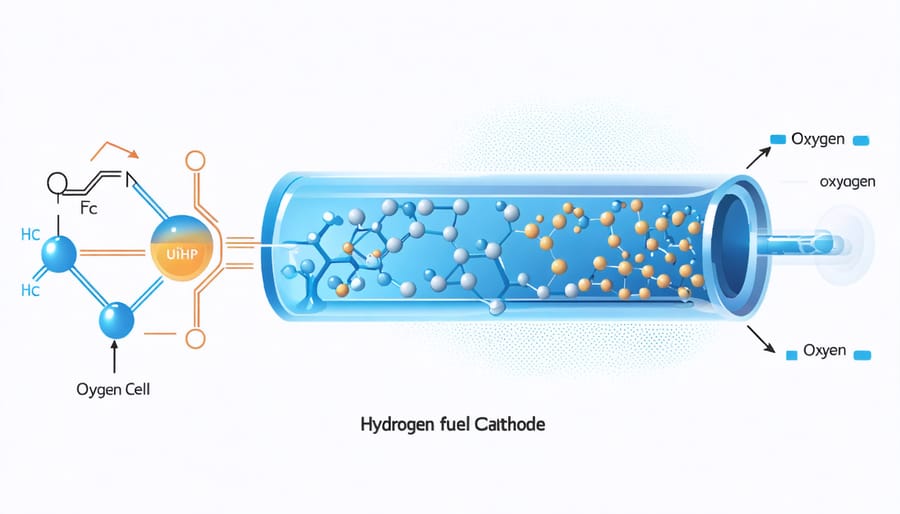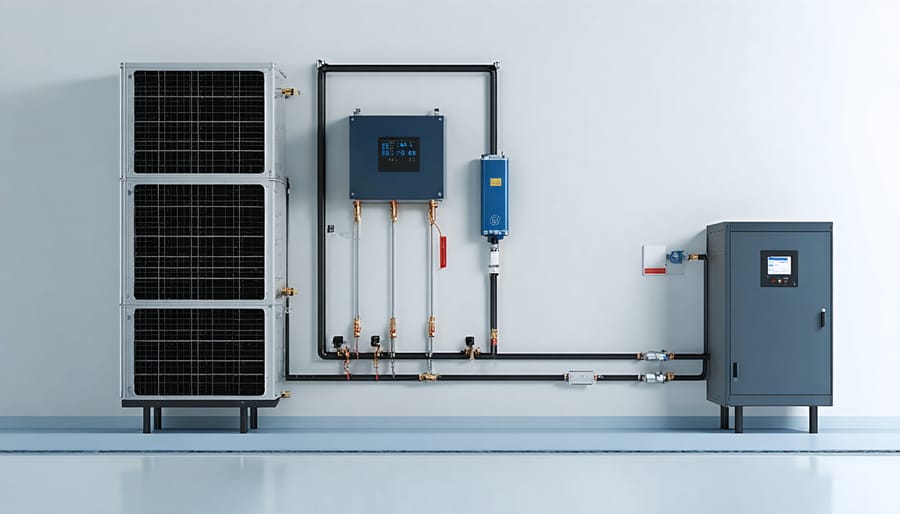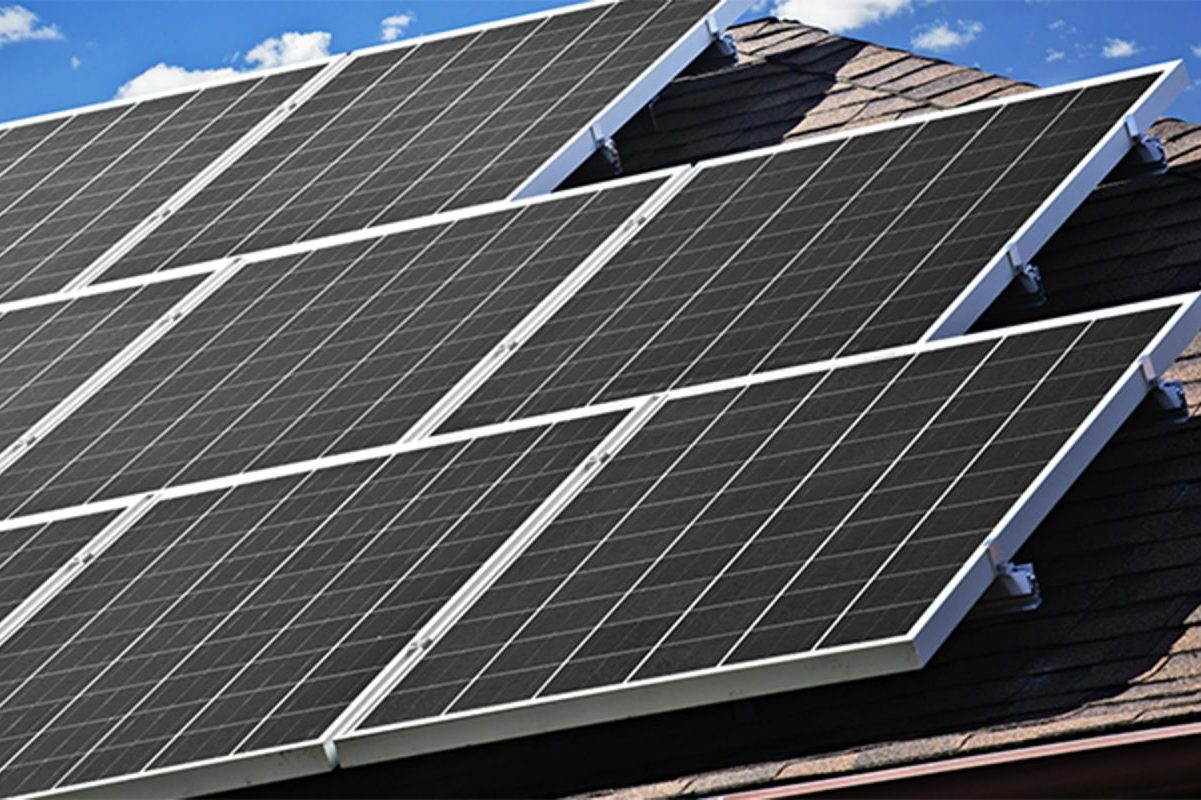At the heart of hydrogen fuel cells, the cathode performs a fascinating dance of chemistry that transforms hydrogen into clean, usable electricity for your home. As oxygen molecules flow into the fuel cell, they encounter the cathode’s specially designed surface, where a remarkable reaction takes place. Here, oxygen combines with electrons and hydrogen ions to produce pure water as its only byproduct – a process that exemplifies the elegant simplicity of clean energy production. Understanding this cathode reaction helps homeowners appreciate how fuel cells could revolutionize residential power generation, offering a reliable, clean alternative to traditional energy sources without producing harmful emissions. For environmentally conscious homeowners seeking energy independence, the cathode’s role represents a crucial step in transforming hydrogen into the sustainable power solution of tomorrow.
The Cathode’s Critical Role in Fuel Cell Operation
The Basic Chemistry at the Cathode
At the cathode side of a hydrogen fuel cell, a remarkable process takes place that’s essential for generating clean electricity. Oxygen from the air enters the fuel cell and meets up with electrons and hydrogen ions (protons) that have traveled from the anode. When these components come together, they undergo a chemical reaction that produces water as the only byproduct.
Think of the cathode as a meeting point where oxygen molecules act like eager hosts, welcoming electrons and protons to create something new. The oxygen molecules first split apart and then combine with the incoming hydrogen ions and electrons. This combination forms water molecules (H2O) through a process called reduction.
What makes this process special is its efficiency and cleanliness. Unlike traditional power generation that burns fuel and creates harmful emissions, the cathode reaction in a fuel cell produces pure water that’s so clean you could actually drink it. This water either drips out of the fuel cell or evaporates into the air, making fuel cells an incredibly environmentally friendly power source for homes and vehicles.

From Air to Energy: The Cathode Process
The cathode in a hydrogen fuel cell works like nature’s own energy converter, turning the oxygen from the air we breathe into clean electrical power. When oxygen molecules enter the fuel cell, they’re drawn to the cathode like metal to a magnet. Here, they undergo a remarkable transformation that’s essential for powering your home.
The process begins when air flows into the fuel cell. The cathode, typically made from specially treated carbon paper coated with platinum, acts as a gathering point for oxygen molecules. As these molecules reach the cathode’s surface, they combine with electrons that have traveled through your home’s electrical circuit and hydrogen ions (protons) that have moved through the fuel cell’s membrane.
This three-way meeting creates a chemical reaction that produces water as its only byproduct – no harmful emissions, just pure H2O. It’s similar to how plants use sunlight to create energy, but much faster and more efficient. The resulting water either evaporates into the air or can be collected for other uses.
The beauty of this process lies in its simplicity and cleanliness. Unlike traditional power generation that burns fossil fuels, the cathode process in fuel cells produces electricity without any smoke, soot, or greenhouse gases. This makes it an ideal energy solution for environmentally conscious homeowners looking to reduce their carbon footprint while maintaining reliable power supply.
Why the Cathode Matters for Your Home Energy System

Energy Output and Efficiency
The cathode’s performance is crucial for maximizing the power output of your hydrogen fuel cell system. When operating at peak efficiency, the cathode can help your fuel cell convert up to 60% of hydrogen’s energy into usable electricity – that’s nearly twice as efficient as traditional gas engines. This high efficiency makes fuel cells an attractive option for creating an energy-independent home.
The cathode’s ability to efficiently reduce oxygen affects both power generation and system longevity. A well-functioning cathode ensures steady electrical output while minimizing energy waste through heat. This translates to lower operating costs and more reliable power generation for your home.
Several factors influence cathode performance, including temperature, humidity, and catalyst distribution. Maintaining optimal conditions helps prevent power drops and extends the life of your fuel cell. Modern cathode designs incorporate advanced materials that resist degradation and maintain high efficiency even after thousands of hours of operation, making them a dependable choice for sustainable home energy solutions.
The Environmental Benefits of Cathode Reactions
The cathode reaction in hydrogen fuel cells represents one of the most environmentally friendly energy conversion processes available today. Unlike traditional power generation methods that burn fossil fuels, the cathode process combines hydrogen ions with oxygen from the air to produce pure water as its only byproduct. This remarkable chemical reaction creates electricity without releasing harmful greenhouse gases or pollutants into the atmosphere.
When oxygen molecules reach the cathode, they participate in a clean reaction that’s completely free of carbon emissions. The water produced is so pure that it’s actually drinkable, though in most fuel cell applications, it simply evaporates harmlessly into the atmosphere. This means that even with widespread adoption of fuel cell technology, there’s no negative impact on air quality or contribution to climate change.
The environmental benefits extend beyond just clean operation. Since the cathode reaction requires only oxygen from the air and hydrogen, there’s no need for mining or drilling for fuel sources. This eliminates the environmental degradation associated with fossil fuel extraction and reduces the carbon footprint of energy production significantly.
For homeowners and businesses using fuel cell systems, this translates to guilt-free energy consumption. The cathode reaction’s clean operation means you can power your home or vehicle while knowing you’re contributing to a more sustainable future, all while enjoying reliable and efficient energy production.
Understanding how the cathode works in a hydrogen fuel cell is crucial for homeowners considering this technology as part of their journey to become energy self-sufficient. The cathode’s role in converting hydrogen into clean electricity represents the heart of this innovative technology, offering a reliable and environmentally friendly power source for your home.
By grasping this fundamental process, you can make more informed decisions about incorporating fuel cells into your home energy system and better understand their maintenance requirements. The cathode’s efficient operation directly impacts the system’s overall performance and longevity, potentially affecting your long-term energy costs and environmental impact.
As fuel cell technology becomes more accessible for residential use, this knowledge helps you evaluate different systems, communicate effectively with installers, and maximize the benefits of your investment. Remember that a well-functioning cathode means cleaner energy production, reduced carbon emissions, and a more sustainable future for your household. Consider this understanding as a valuable step toward energy independence and environmental stewardship.









